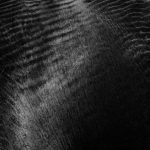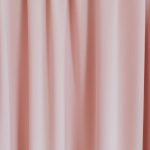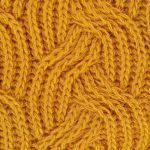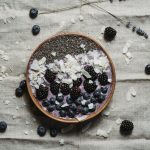Coconut fiber fabric comes from the natural fibers found in coconut husks, making it a strong, breathable, and eco-friendly textile. You’ll find it’s crafted through sustainable methods where husks are soaked, fibers separated, spun into yarn, and woven into durable fabric. This material resists mold, wicks moisture, and softens with use, all while supporting environmental health by reducing waste and chemical use. Keep exploring to uncover how it compares to other fabrics and its growing role in sustainable fashion.
Table of Contents
Key Takeaways
- Coconut fiber fabric is made from the natural fibers extracted from coconut husks, known as coir.
- The fibers undergo soaking, separation, drying, spinning, and weaving or knitting to create durable fabric.
- It is strong, breathable, moisture-wicking, mold-resistant, and softens with use.
- The fabric’s production uses renewable coconut husks, reducing waste and environmental impact.
- Coconut fiber fabric is a sustainable, biodegradable alternative requiring fewer chemicals and less water than conventional textiles.
Origins and History of Coconut Fiber Fabric
Although coconut fiber fabric has gained popularity recently, its origins trace back centuries to tropical regions where coconuts naturally grow.
You’ll find that communities in places like Southeast Asia and the Pacific Islands have long used coconut fibers, or coir, for practical purposes. They crafted ropes, mats, and even clothing from this durable material.
Over time, people recognized the fiber’s strength and water resistance, making it ideal for various applications.
When you look into history, you’ll see that coconut fiber wasn’t just a resource; it was an essential part of daily life and culture.
Today, its revival as a sustainable textile connects you to these ancient traditions while addressing modern environmental concerns.
The Process of Extracting Coconut Fibers
The process of extracting coconut fibers involves several key steps that transform the tough outer husk into usable coir. First, the husks are soaked in water, softening the fibers. Then, you’ll separate the long, coarse fibers from the shorter ones by beating or retting. Finally, the fibers are dried thoroughly to prevent mold and prepare them for further use.
| Step | Description | Purpose |
|---|---|---|
| Soaking | Husks soaked in water | Softens fibers |
| Fiber Separation | Beating/retting removes fibers | Extracts usable coir |
| Drying | Fibers dried in the sun | Prevents mold, preserves |
This process readies the fibers for transformation into sustainable fabrics.
How Coconut Fibers Are Transformed Into Fabric
Once the coconut fibers are properly dried, they’re ready to be spun into yarn. You begin by loosening and aligning the fibers to prepare them for spinning.
Then, the fibers are twisted together, creating a strong, continuous thread. This yarn is what forms the base for fabric production.
Next, the fabric is woven or knitted depending on the desired texture and use. Here’s how the transformation unfolds:
- Spinning: Fibers are twisted into yarn, ensuring strength and uniformity.
- Weaving/Knitting: Yarn is interlaced or looped to form fabric.
- Finishing: The fabric undergoes treatments like washing or dyeing to enhance softness and appearance.
Key Properties of Coconut Fiber Fabric
Because coconut fiber fabric combines natural strength with breathability, you’ll find it both durable and comfortable to wear. The fibers are coarse yet flexible, giving the fabric excellent tensile strength and resistance to wear and tear. This means your garments can withstand regular use without losing shape or integrity.
Coconut fiber fabric also excels at moisture-wicking, keeping you dry by allowing air to circulate and sweat to evaporate quickly. Additionally, it’s naturally resistant to mold and mildew, making it ideal for humid climates.
While it has a slightly rough texture compared to softer fabrics, its durability and breathability often outweigh this. Plus, it ages well, becoming softer with each wash while maintaining its robust structure. You’ll appreciate these practical qualities in everyday wear.
Environmental Benefits of Using Coconut Fiber
Beyond its practical qualities, coconut fiber fabric offers significant environmental benefits that make it a smart choice for sustainable fashion. When you choose coconut fiber, you’re embracing a material that supports ecological balance.
Here’s why it stands out:
- Renewable Resource – Coconut husks, the source of the fiber, are a byproduct of the coconut industry, reducing waste and making full use of natural materials.
- Biodegradable – Unlike synthetic fibers, coconut fiber decomposes naturally, minimizing landfill impact and pollution.
- Low Water and Chemical Use – Growing coconuts requires less water and fewer pesticides compared to conventional fiber crops, conserving resources and protecting ecosystems.
Common Applications of Coconut Fiber Textiles
Coconut fiber textiles serve a variety of purposes across industries, thanks to their durability and eco-friendly nature. You can find them in home decor, fashion, and even automotive sectors. Their natural rough texture makes them ideal for mats and rugs, while their breathability suits summer clothing. Plus, they’re great for upholstery and insulation. Here’s a quick look at common uses:
| Application | Industry | Key Benefit |
|---|---|---|
| Mats and Rugs | Home | Durable, water-resistant |
| Apparel | Fashion | Breathable, lightweight |
| Upholstery | Furniture | Strong, eco-friendly |
| Automotive Parts | Automotive | Durable, heat-resistant |
| Insulation | Construction | Natural, sustainable |
Using coconut fiber textiles offers you sustainable, versatile options across many fields.
Comparing Coconut Fiber Fabric to Other Natural Fibers
When you compare coconut fiber fabric to other natural fibers like cotton, hemp, or jute, you’ll notice distinct differences in texture, durability, and environmental impact.
Coconut fiber, or coir, is coarser and more rigid than cotton’s softness but offers greater durability. Hemp shares coir’s strength but feels smoother and is more breathable, while jute falls somewhere in between.
Environmentally, coir stands out by using coconut husks, a waste product, making it highly sustainable.
Coir’s eco appeal comes from repurposing coconut husks, turning waste into sustainable fabric.
Here’s a quick comparison:
- Durability: Coconut fiber excels in toughness, outperforming cotton and jute.
- Texture: Coir is rougher, unlike the soft cotton or silky hemp.
- Sustainability: Coir uses waste materials, reducing environmental footprint more than conventional fibers.
You’ll find coconut fiber fabric uniquely practical and eco-friendly.
Care and Maintenance Tips for Coconut Fiber Fabric
Although coconut fiber fabric is known for its durability, you’ll want to handle it with care to maintain its strength and appearance over time. Always wash it gently by hand or use a delicate machine cycle with cold water. Avoid harsh detergents and bleach to prevent fiber damage. Air dry flat to keep the fabric’s shape and avoid direct sunlight, which can cause fading. Iron on low heat if necessary, using a pressing cloth.
| Task | Method | Tip |
|---|---|---|
| Washing | Hand or delicate | Use mild detergent only |
| Drying | Air dry flat | Avoid direct sunlight |
| Ironing | Low heat | Use pressing cloth |
| Storage | Cool, dry place | Keep away from moisture |
Future Trends in Coconut Fiber Textile Development
Maintaining your coconut fiber fabric properly guarantees it lasts, but innovations in the textile industry are pushing this natural material even further.
You’ll see exciting advancements that make coconut fiber textiles more versatile and sustainable.
Here are three key future trends to watch:
- Enhanced Blends: Combining coconut fiber with other eco-friendly fibers to improve texture, softness, and durability.
- Biodegradable Treatments: Developing chemical-free finishes that maintain fabric quality while ensuring full compostability.
- Smart Textiles: Integrating technology for moisture-wicking, UV protection, and antibacterial properties without sacrificing sustainability.
Frequently Asked Questions
Is Coconut Fiber Fabric Hypoallergenic for Sensitive Skin?
You might find coconut fiber fabric gentle, but it’s not always hypoallergenic for sensitive skin. Since it’s natural, it usually causes fewer reactions, yet some people with extreme sensitivity could still experience irritation or discomfort.
Can Coconut Fiber Fabric Be Blended With Synthetic Fibers?
Imagine weaving nature’s strength with modern innovation—you can blend coconut fiber fabric with synthetic fibers. This fusion enhances durability and comfort, letting you enjoy eco-friendly qualities alongside the resilience and flexibility of synthetics in your textiles.
What Is the Average Lifespan of Coconut Fiber Clothing?
You can expect coconut fiber clothing to last around 1 to 3 years with regular use. Its durability depends on care, but it’s sturdy enough for everyday wear before showing significant signs of wear.
Are There Any Certifications for Sustainable Coconut Fiber Textiles?
You can find certifications like GOTS and OEKO-TEX for sustainable coconut fiber textiles, ensuring eco-friendly production. Look for these labels to trust the fabric’s sustainability and safety for both you and the environment.
How Does Coconut Fiber Fabric Handle Moisture and Odor?
Like a forest floor soaking in rain without holding dampness, coconut fiber fabric wicks moisture away swiftly. You’ll find it naturally resists odor, keeping you fresh, as if nature itself shields you from discomfort.
- Styling Tips: What to Wear With a Pink Corduroy Jacket - July 4, 2025
- Stylish Outfits: What to Wear With Pink Corduroy Pants - July 4, 2025
- Discover the Unique Beauty of Corduroy Velvet Fabrics - July 4, 2025







